
Air travel and time travel
When you land at most major airports around the world, deplane, and walk down the jet bridge and into the terminal, it can be hard to tell that you’ve actually traveled anywhere. With a few notable exceptions, modern airports largely look the same, with never-ending terminals, confusing signage, and little variation in the food available. Even some of the oldest airports in the world that are still in use—including Australia’s Sydney Kingsford Smith International Airport and Amsterdam’s Schiphol Airport—have gone through so many renovations over the decades that they tend to look like ones that have been built much more recently. And so while they’re technically chronologically old, it’s not as if passengers get a glimpse into air travel of the past. But that’s not always the case. Here are 12 airports that are also overlooked landmarks and feature much of their original interiors and exteriors.
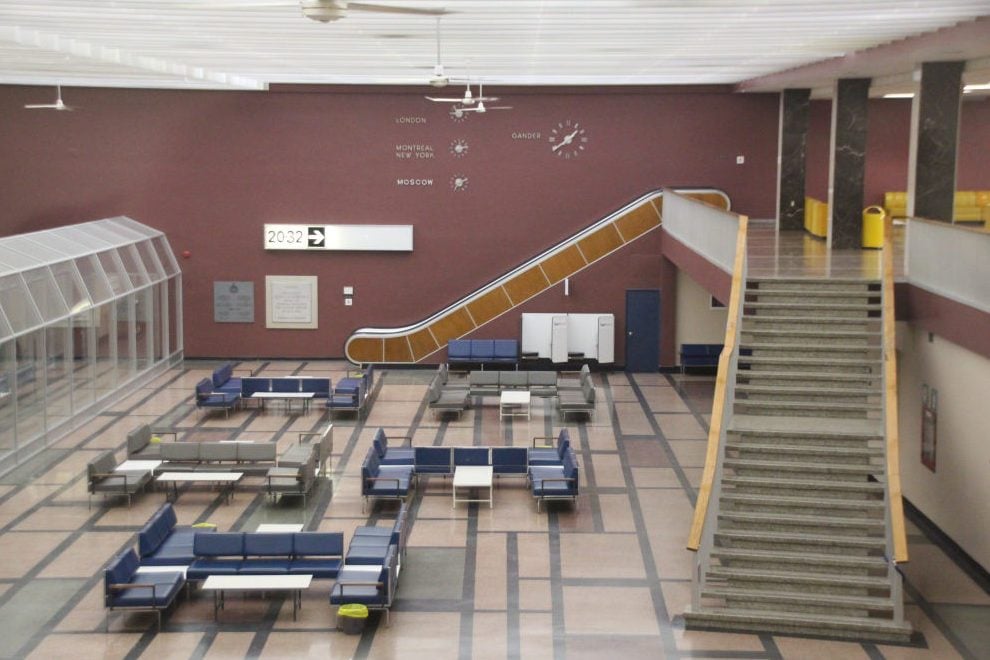
Gander International Airport
Despite being relatively small in size, Gander International Airport in Newfoundland has an impressive history. It opened in 1938 and, initially, mostly catered to military air traffic. After World War II, a number of commercial airlines—including Pan-American World Airways, Trans-World Airline, Trans Canada Airlines (later Air Canada), and British Overseas Airway Corporation (later British Airways)—began using Gander as a stopover and a place to refuel on transatlantic flights, making it one of the busiest airports in the world. In order to accommodate the 13,000 aircraft that landed annually carrying a quarter-million passengers, a new terminal was built at a cost of $3 million; it opened on June 19, 1959. The sleek, new Modernist lounge featured furniture by designers such as Charles and Ray Eames and Jacques Guillon, and it was the height of mid-century air travel glamour.
During its heyday, Gander Airport hosted international guests including Queen Elizabeth II, Marilyn Monroe, Fidel Castro, Frank Sinatra, Albert Einstein, and the Beatles. However, within a few years, Gander’s time in the spotlight was mostly over, thanks to new jet airplanes that didn’t require as many refueling stops. It did make the news again in 2001, though, when global air traffic was halted as a result of the terrorist attacks on September 11; approximately 7,000 people were left stranded in the small airport and town—which later became the premise of the Broadway musical Come From Away. In addition to mid-century glamour, here are 12 things you won’t see in airports anymore.
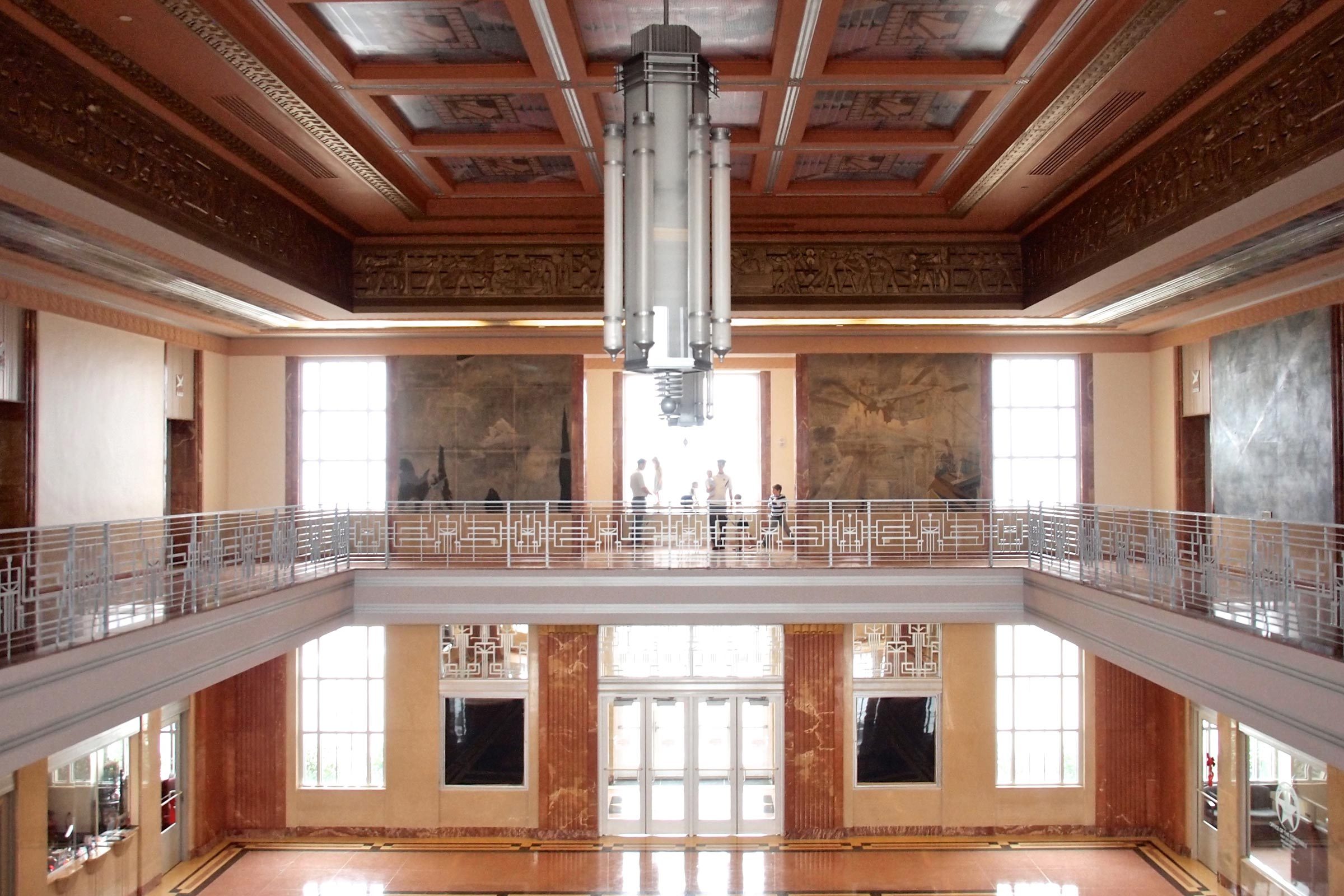
New Orleans Lakefront Airport
When Shushan Airport (later renamed New Orleans Lakefront Airport) opened in 1934, it wasn’t only the city’s first commercial airport—it was also an architectural wonder that included everything from tennis courts and a swimming pool to a post office and a surgical suite. The stunning Depression-era Art Deco interior and exterior was as impressive to local residents as it was to travelers arriving in the city. But the airport’s glory days were short-lived. Most of the city’s commercial traffic was rerouted to New Orleans International Airport (now Louis Armstrong International Airport) after it opened in 1946.
From there, things went downhill at Lakefront Airport for decades. First, it was remodeled in the 1960s, at which point most of its signature Art Deco features were covered up. Then in 2005, the terminal was flooded with four feet of water from Lake Pontchartrain during Hurricane Katrina. Though that could have spelled the end for the airport, it instead prompted a $17 million restoration that brought it back to its glamorous Art Deco roots.
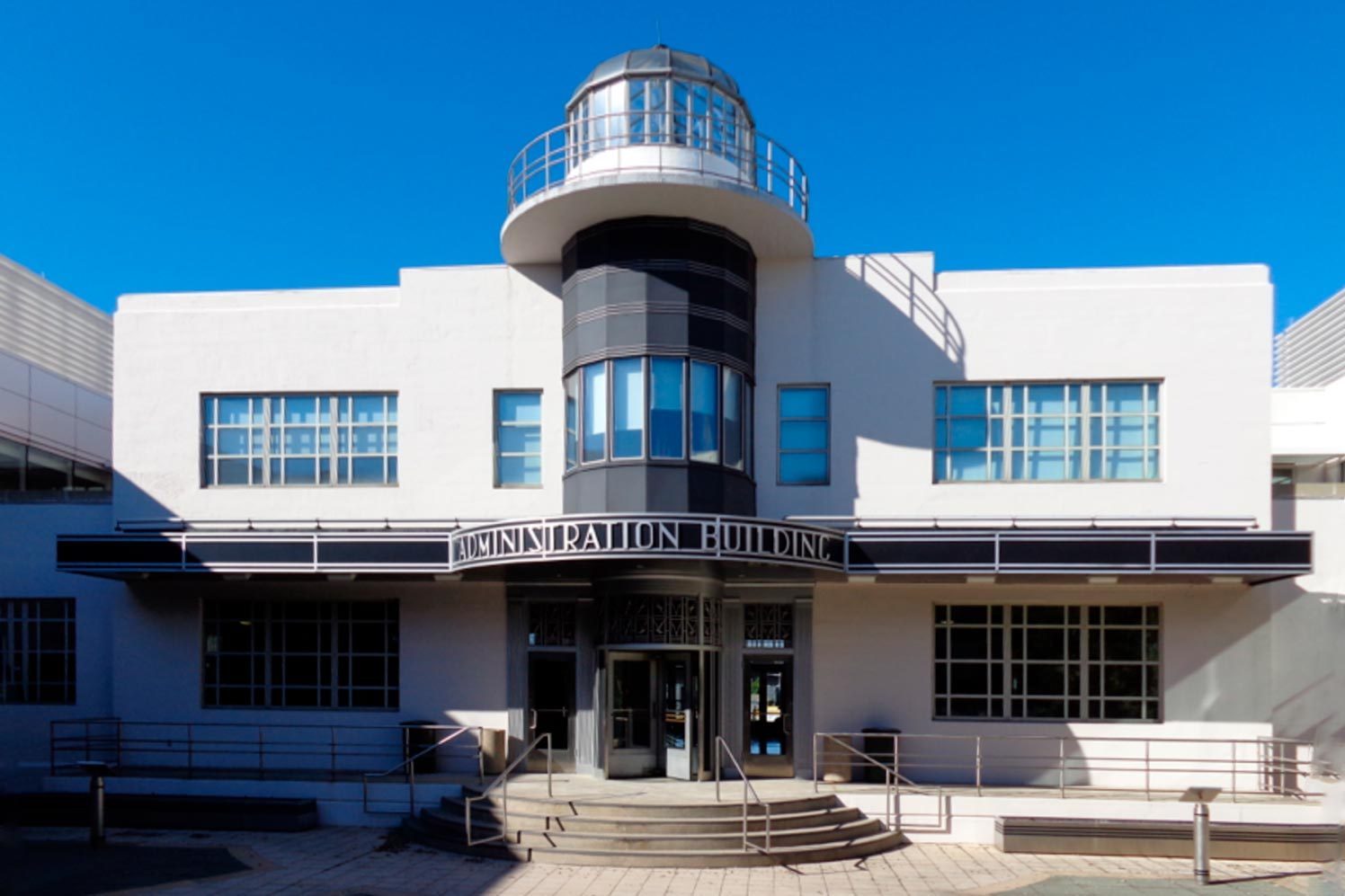
Newark Airport Building 1
When you think about beautiful airports, chances are New Jersey’s Newark International Airport does not spring to mind. But hidden in the maze of terminals and fast food chains is a relatively untouched piece of air travel history. Known as “Building 1,” it is now home to the Port Authority Police Department, airport administration offices, an operations center, and rescue and firefighting departments. But it was originally built in 1935 as Newark Municipal Airport and hosted world-famous pilots including Amelia Earhart, Wiley Post, and Charles Lindbergh. Today, it is listed on the National Register of Historic Places, and the lobby and a few exhibits on aviation history are open to the public.
“The sense of history is palpable throughout the building, going beyond the architecture itself, from historic exhibitions on the ground floor to a restored captain’s quarters on the second floor,” Michelle Young, an adjunct professor of architecture at Columbia University, wrote for Untapped New York after a 2019 visit to Building 1. While you’re thinking about travel, check out these 10 things you won’t see in hotels anymore.
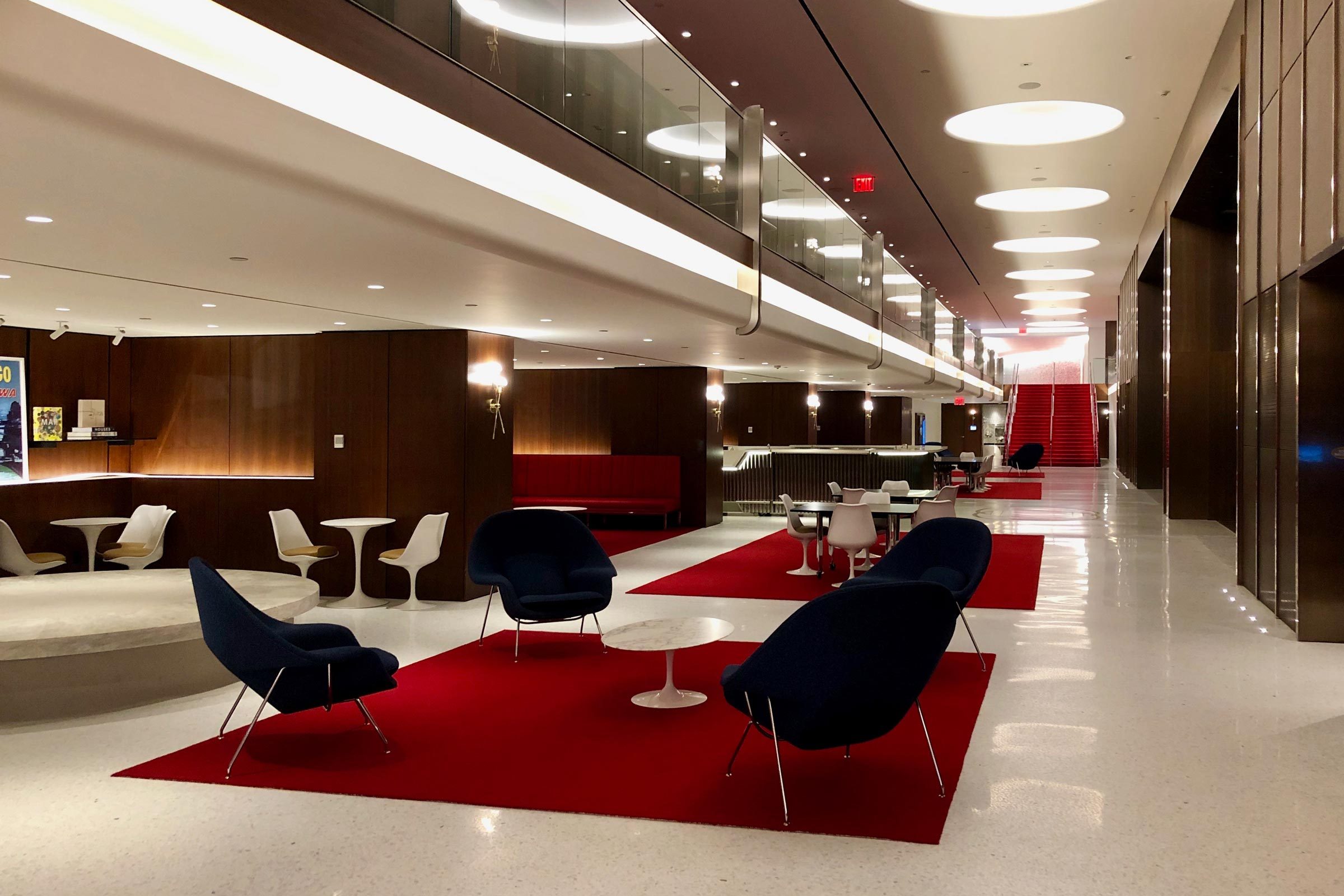
John F. Kennedy International Airport
New York City’s John F. Kennedy International Airport provides passengers with the opportunity to travel to destinations around the world, but it also offers a version of time travel—specifically, a trip back to 1962. This comes in the form of the TWA Hotel, which opened in 2019. In 1956, playboy and aviation enthusiast Howard Hughes—who owned and controlled Trans World Airlines (TWA) from 1939 until 1960—commissioned Finnish-American architect Eero Saarinen to design the new terminal, reportedly telling him that money was no object. The result was Saarinen’s landmark 1962 TWA Flight Center, which contained all the classic features of mid-century modern design, including a sunken lounge, vaulted concrete roof, and minimalist white furniture.
But in 1970, the arrival of Boeing’s massive 747 plane made smaller terminals like Saarinen’s—which catered to propliners carrying fewer than 100 passengers—of little use. Though there was talk of tearing down the 1962 TWA Flight Center over the years, that stopped in 1994, after it became a New York City landmark. The terminal officially closed in 2001 following TWA’s bankruptcy, after it had sat empty for two years. It remained largely abandoned until 2014, when reconstruction on the hotel began, with the aim to make it look as much like it did in 1962 as possible. Today, guests can spend the night in one of the hotel’s 512 rooms or stop by for a cocktail and to take in the ambiance. Other than having a stiff drink, here are 12 golden rules for stress-free air travel.
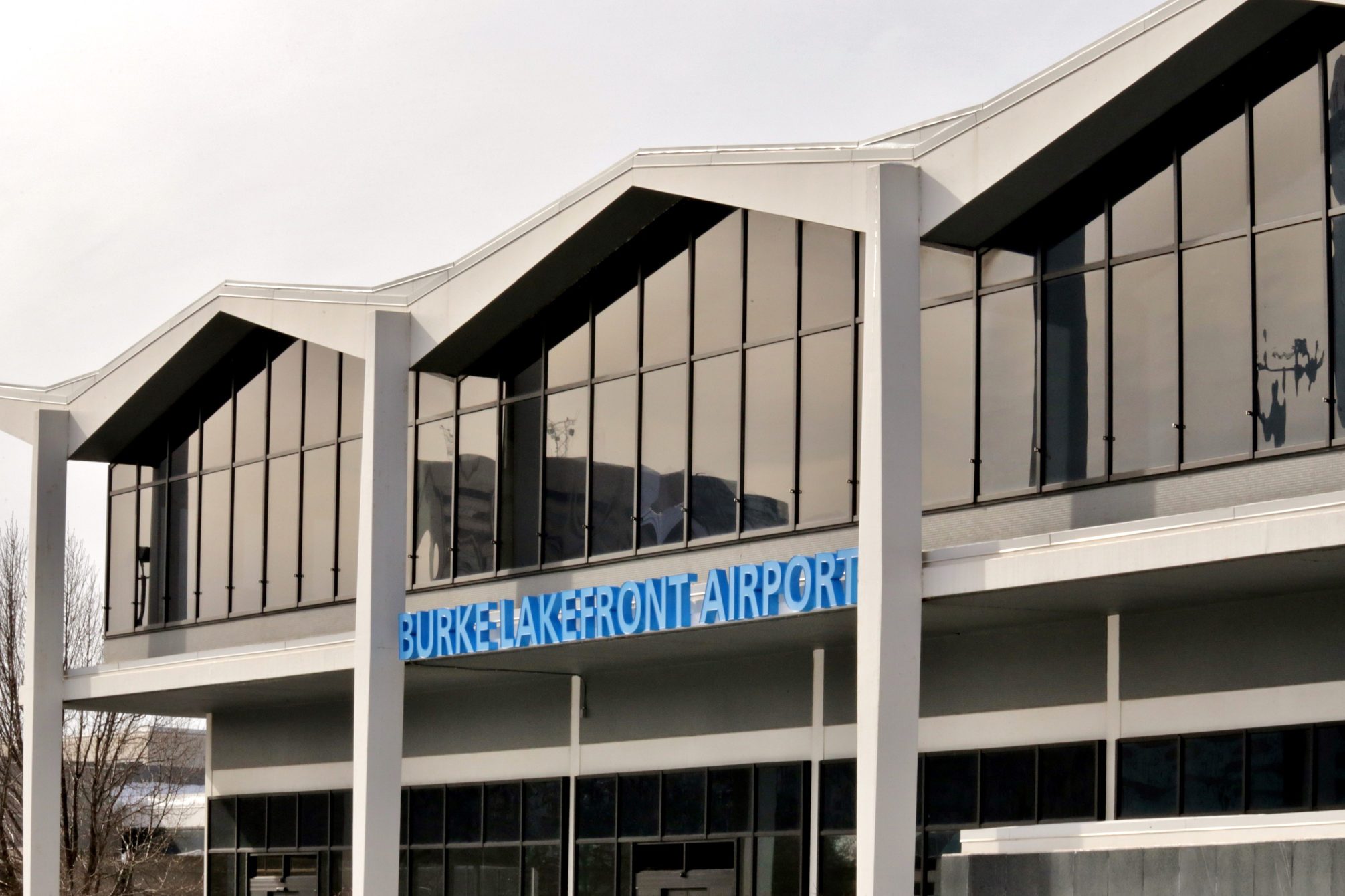
Burke Lakefront Airport
When Lakefront Airport opened in Cleveland in 1947, it was the first downtown airport in the United States. As the name suggests, it is located on the shore of Lake Erie, in a section of the city that once housed a landfill, as well as a makeshift Hooverville shantytown during the Great Depression. Improvements, including paving the dirt runway, were made to the airport beginning in 1957 under Mayor Thomas Burke—for whom the airport was renamed.
The elegant, state-of-the-art passenger terminal was dedicated in 1960, and despite multiple expansions of the airport since, much of the interior and exterior of the mid-century terminal remains today. Though there has been a steep decline in air traffic and the airport now only caters to private and charter flights, it’s still possible to visit the lobby, which is open to the public and serves as the location of the International Women’s Air and Space Museum.
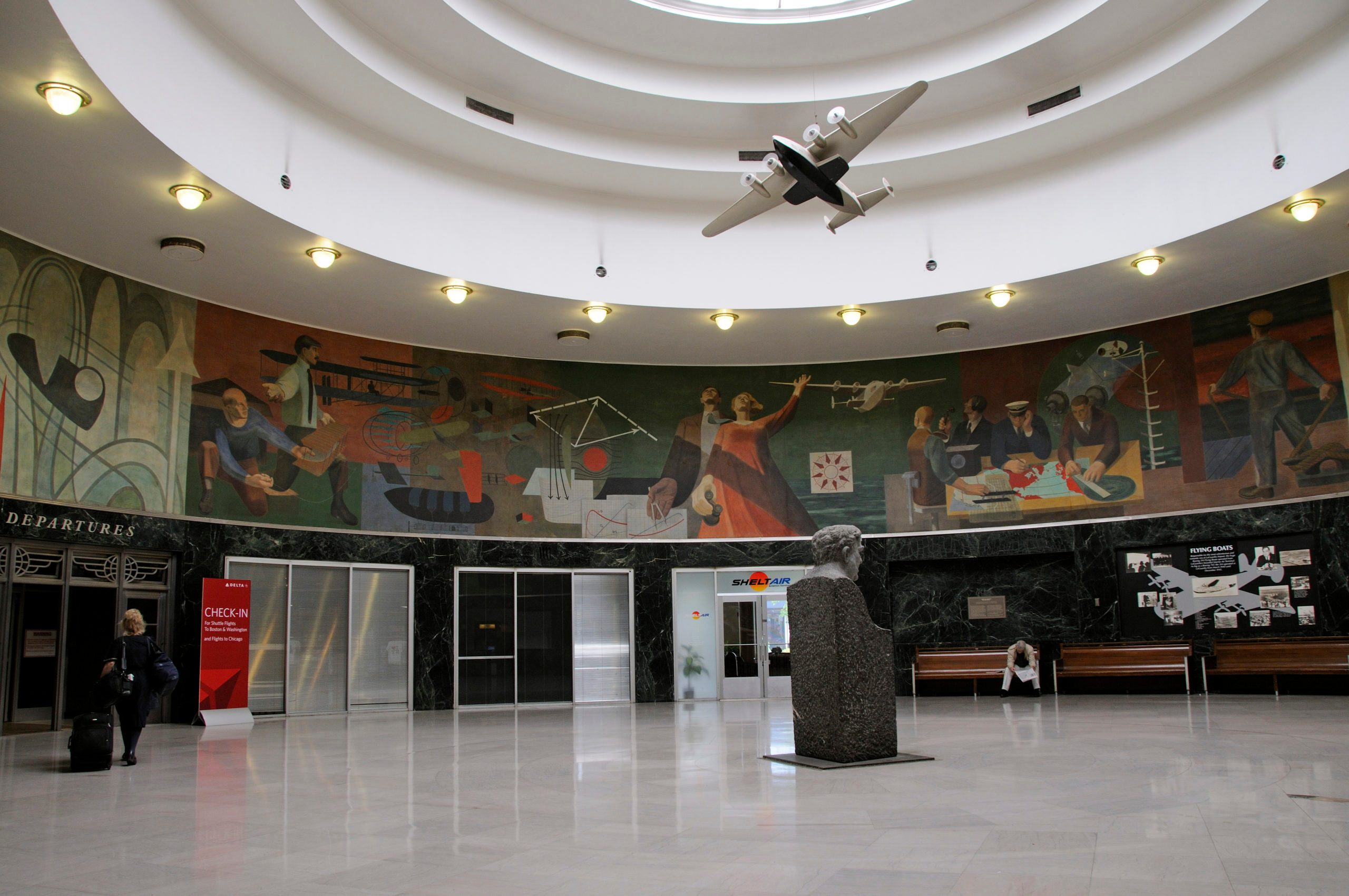
Marine Air Terminal at LaGuardia Airport
Prior to World War II, some of the largest aircraft in operation were “flying boats,” which were fixed-wing seaplanes designed to land on water. Pan American Airways constructed three gateway terminals during the flying boat’s heyday, located in Miami (1934), San Francisco (1939), and New York City (1940). And while all three still stand, only one remains in operation for its original use today: the Marine Air Terminal at LaGuardia Airport. With an Art Deco interior and exterior, the Marine Air Terminal’s most distinctive feature is its rotunda, complete with a skylight, an airline motif (like propellers adorning each bench), and the largest mural produced by the Great Depression’s Work Projects Administration, which was designed by James Brooks and depicts the history of aviation—all of which remain today.
Following World War II, the use of flying boats decreased significantly, and the Marine Air Terminal closed in 1952. It was renovated and reopened in 1966 for private and corporate aircraft. In 1986, Pan American Airways returned to its former home, now also known as Terminal A. Since then, the Marine Air Terminal has been used primarily for short commercial shuttle flights between New York and Boston, Chicago, and Washington, D.C. Today, it is used exclusively by Jet Blue and is open to the public. If your flight is delayed, at least you can entertain yourself by exploring the historic terminal.
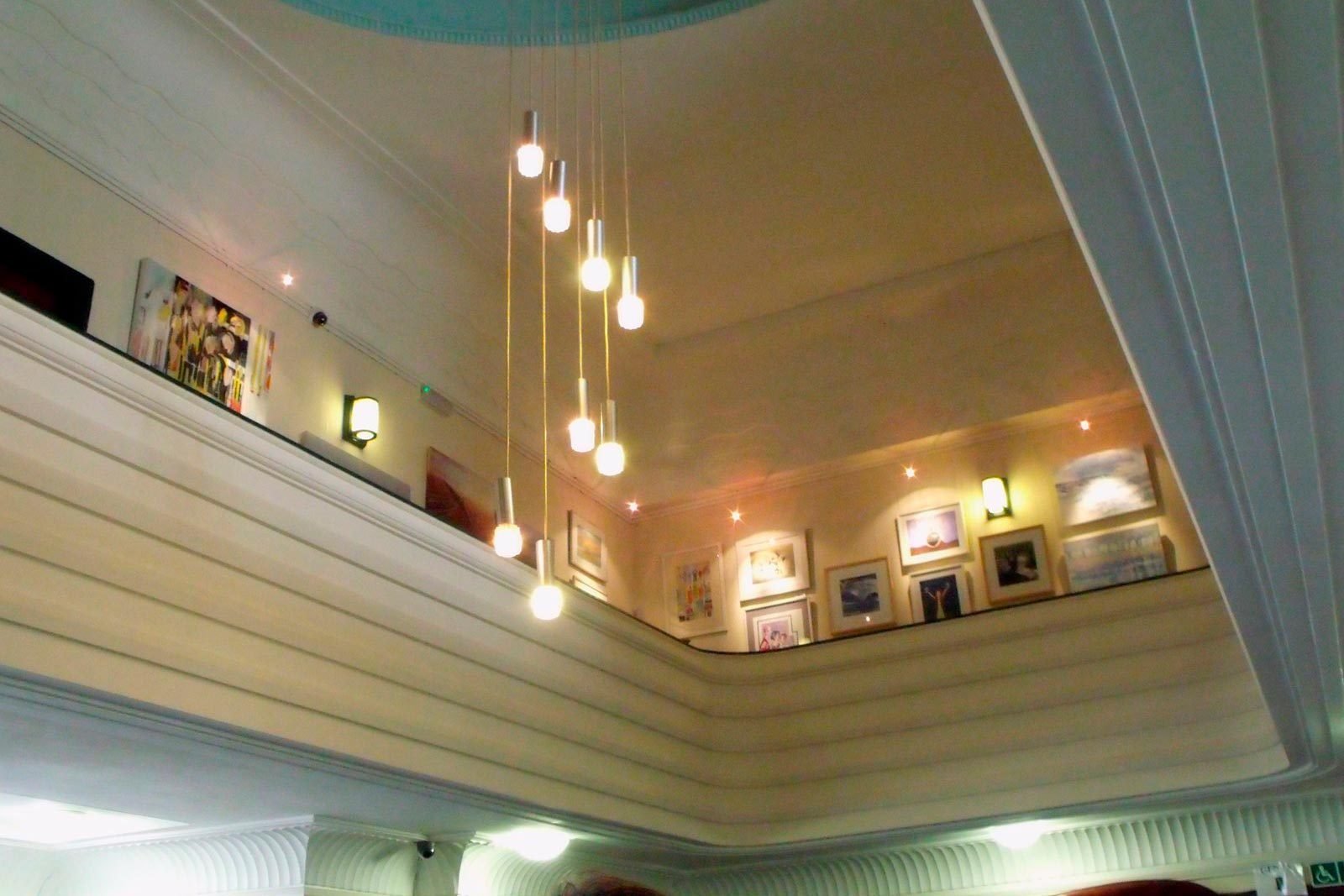
Brighton City Airport
Though the terminal building of the Brighton City Airport in England opened in 1936 under the name Brighton Hove and Worthing Joint Municipal Airport, the location had housed some type of airfield since 1911, making it the oldest purpose-built airport in the world. And while it is still a functioning airport, a significant amount of its original Art Deco furnishings, decor, and architectural details remain today. That includes the Whispering Gallery on the first floor and the main window design above the main entrance. Brighton City Airport—also known as Shoreham Airport—was the target of multiple air raids during World War II, but remarkably, the terminal building was never damaged. Today, the terminal and its dining facilities are still open to visitors. Need to connect pre-flight? Here’s a map with airport Wi-Fi passwords all over the world.
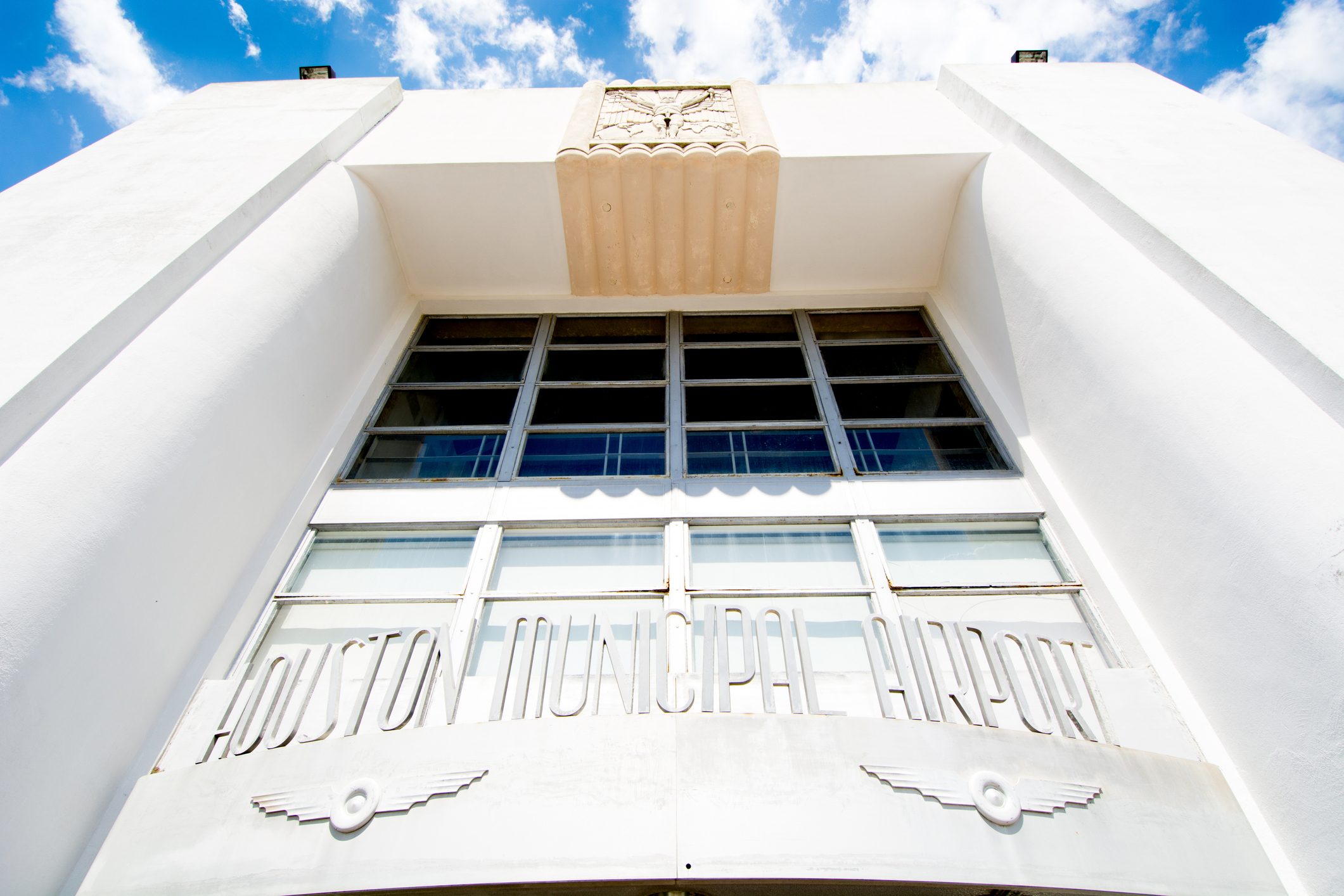
Houston Municipal Airport
The 1940s saw the expansion of municipal airports owned and operated by cities, including Houston Municipal Airport. The Art Deco terminal, designed by local architect Joseph Finger, opened in 1940 and served passengers until 1955. At that point, most of the airport’s functions were relocated to a newer terminal, which is still in use today. After that, the 1940 terminal fell into disrepair and was eventually abandoned in 1978. It sat empty until 2004, when it was converted into the 1940 Air Terminal Museum. The terminal building was placed on the National Register of Historic Places in 2019 and marked its 80th anniversary on September 28, 2020. The 1940 Air Terminal Museum is currently open to the public and also offers a 360-degree virtual tour of its interior. Of course, you won’t see the type of security features found in airports today.
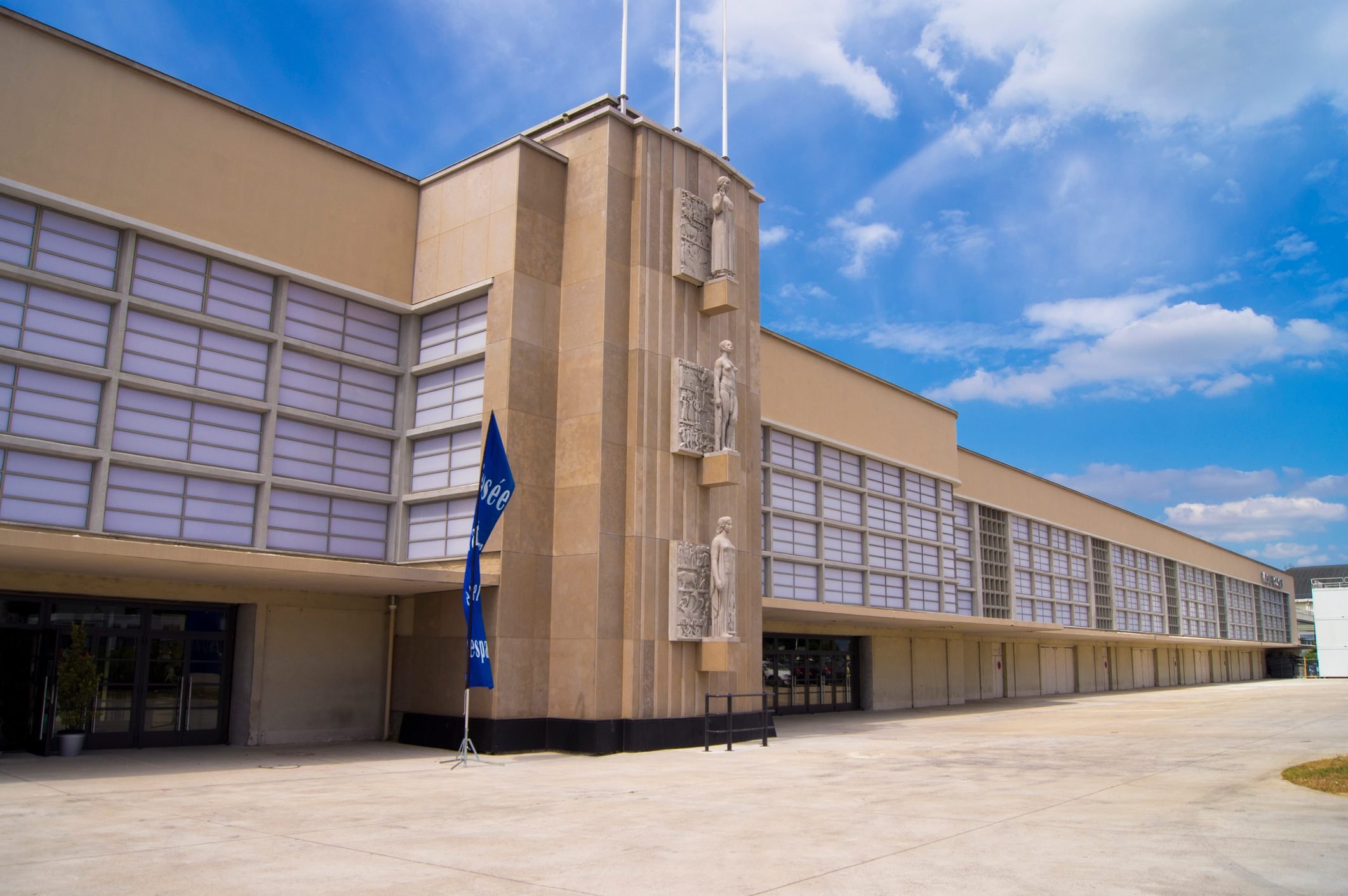
Paris-Le Bourget Airport
Opened in 1919 and located seven miles outside of Paris, Le Bourget Airport was once the city’s primary airport. This changed in 1981, when it lost most of its commercial air traffic to Paris-Orly and Paris-Roissy Charles de Gaulle Airports and began operating as a corporate airport. Paris-LeBourget Airport has also housed the country’s national Air and Space Museum since 1975. The airport itself has a place in aviation history, as the location where Charles Lindbergh landed the Spirit of St. Louis in 1927, following his successful attempt at a transatlantic flight. Visitors to the Air and Space Museum have access to several of the historical buildings, including the Salle des Huit Colonnes (Hall of the Eight Pillars), which was restored to its original Art Deco splendor in 2013.
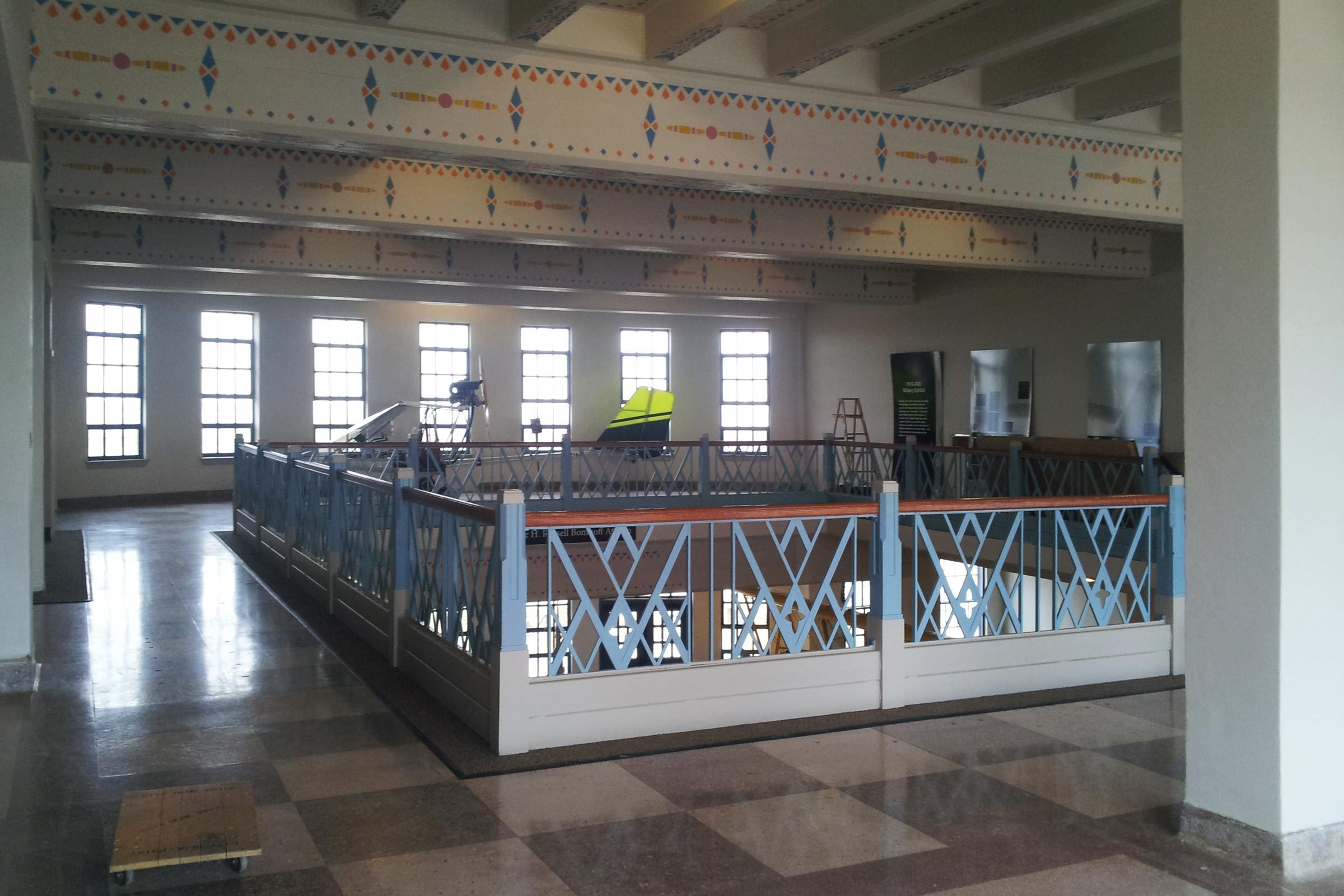
Wichita Municipal Airport
Constructed using materials and labor funded by the Works Progress Administration, Wichita Municipal Airport opened in 1935. The small Art Deco airport saw its share of famous passengers and pilots, including Amelia Earhart, Howard Hughes, Gregory Peck, and Charles Lindbergh. And, according to local legend, Fred Astaire once danced for his fellow passengers in the atrium of the terminal while waiting for his flight. Wichita Municipal Airport was also home to the first woman air traffic control operator in the country, Mary VanScyoc, who started in 1944.
But by 1954, all commercial air traffic was relocated to what is now known as Wichita Dwight D. Eisenhower National Airport. The Kansas Air National Guard operated out of Wichita Municipal Airport until 1984, when the terminal closed and was abandoned. It reopened in 1991 as the Kansas Aviation Museum and continues to welcome visitors today. These 20 major U.S. airports currently rank as the top.
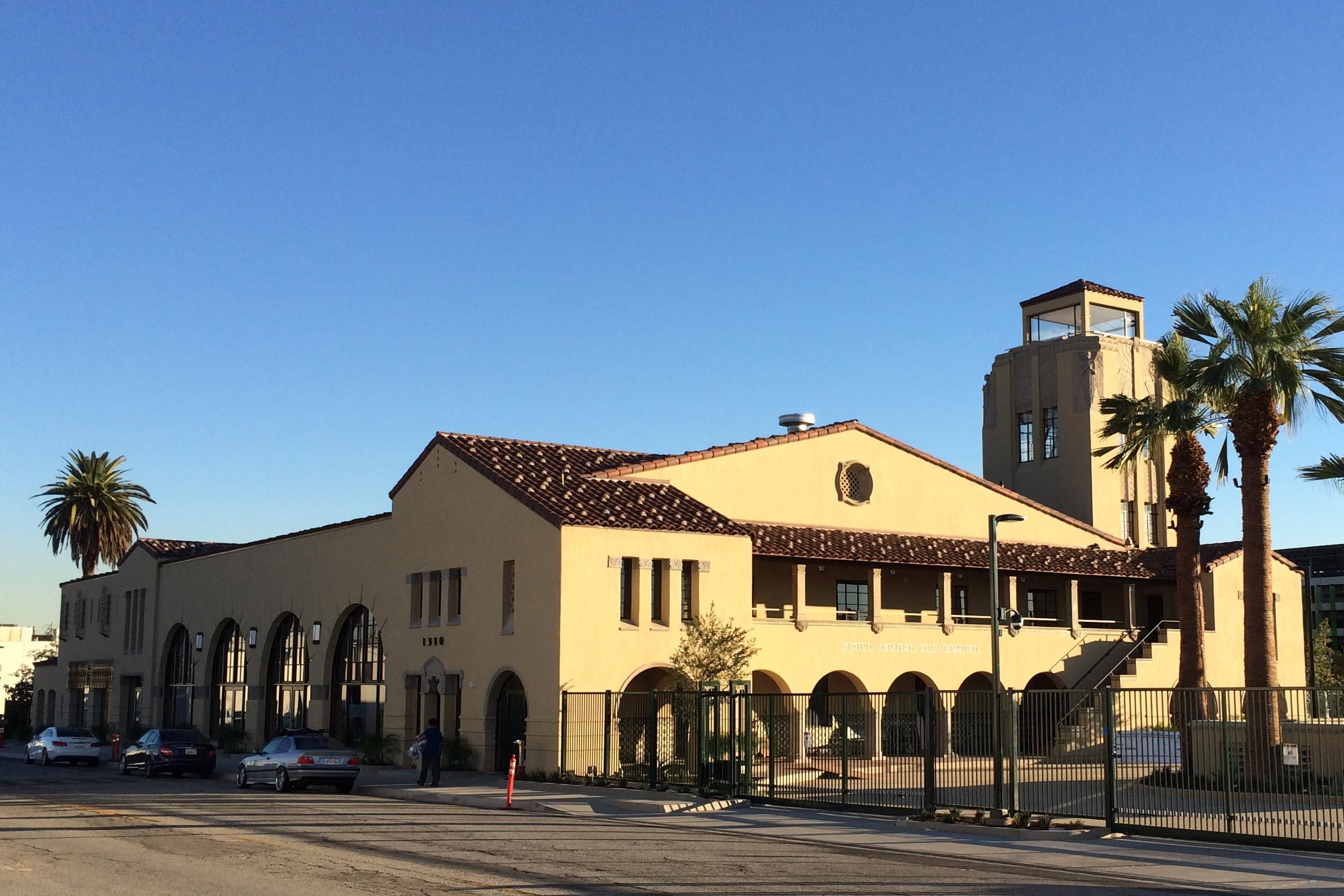
Grand Central Air Terminal
When the Grand Central Air Terminal in Glendale opened in 1928, it was not only the first commercial airport in Los Angeles—it was also the departure point for the country’s first transcontinental airline service and the birthplace of American Airlines. Architect Henry L. Gogerty designed the airport, combining features of Spanish Colonial Revival, Streamline Moderne, and Art Deco architecture. Celebrity aviators like Amelia Earhart, Charles Lindbergh, and Howard Hughes all visited the airport, and several early films were shot here, including 1934’s Bright Eyes starring Shirley Temple and the 1943 mystery Sherlock Holmes in Washington.
The military operated out of the airport during World War II, and it eventually closed in 1959 because it was not able to accommodate the new, much larger aircraft. The iconic terminal building fell into disrepair, and portions were demolished in the 1990s. Renovations on the airport began in 2012, and the Walt Disney Company acquired the property in 2013. It has since reopened and now operates as a museum and visitor’s center, offering free tours with prior reservations. Traveling with a dog? You’ll want to know the 10 most pet-friendly airlines.
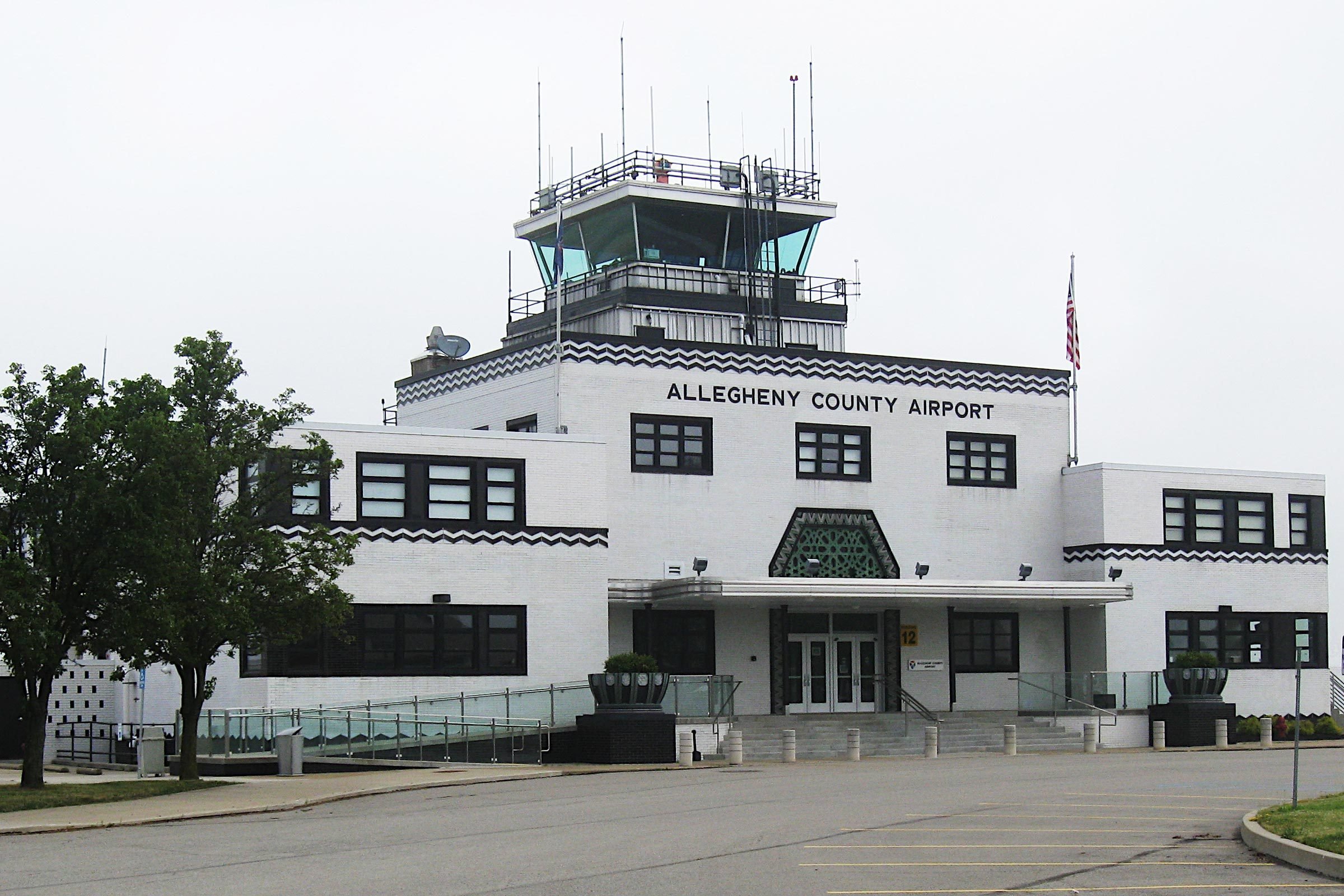
Allegheny County Airport
When Allegheny County Airport, located outside of Pittsburgh, was dedicated in 1931, it was the third largest airport in the country as well as its only hard-surface airport. It was home to other firsts, too, including being the departure point for the country’s first airmail flight, which took place in 1927 between Pittsburgh and Cleveland. Allegheny County Airport was also the home base of Helen Richey: the first woman to pilot a commercial flight in the United States, the first to fly dedicated airmail flights, and one of the first female flight instructors.
A rehabilitation of the historic terminal was completed in 2019, restoring many of the building’s interior and exterior Art Deco architectural features, including the original wooden benches from the 1930s, the typeface on signage, and the black-and-white tiled floor surrounding a compass mosaic. Today, Allegheny County Airport is Pennsylvania’s fifth-largest airport, handling approximately 60,000 departures and arrivals a year, all on noncommercial flights. For something completely different, here’s a look at the world’s biggest airport.
